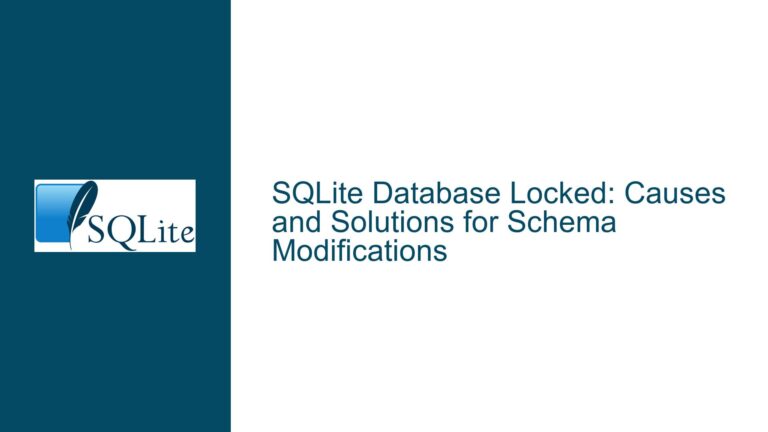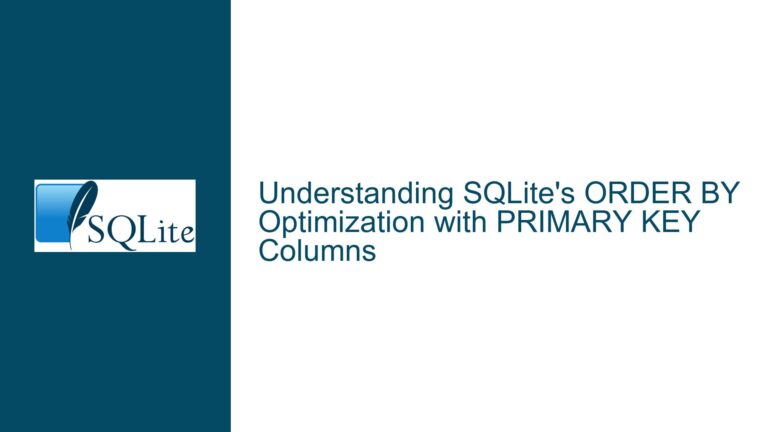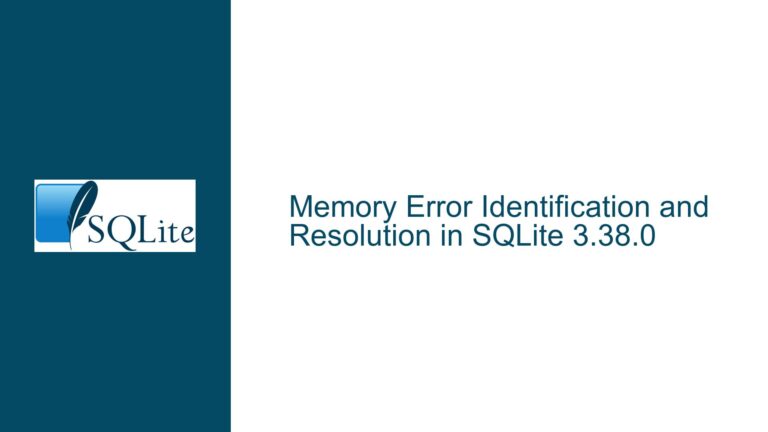Optimizing SQLite Read and Write Performance in Transactions
Understanding SQLite Transaction Performance and VFS Behavior
SQLite is renowned for its lightweight, serverless architecture, making it a popular choice for embedded systems and applications requiring local data storage. However, its performance characteristics, particularly when dealing with transactions, can be nuanced. One common area of confusion revolves around whether executing multiple read queries within a single transaction can improve performance. This issue is further complicated by the role of the Virtual File System (VFS) layer, which abstracts the underlying storage mechanisms.
The VFS in SQLite is designed to be a thin wrapper around the storage system, providing minimal overhead and avoiding any additional logic that could impact performance. This design choice ensures that the VFS remains as efficient as possible, but it also means that the VFS itself does not implement optimizations specifically for read or write transactions. Instead, any performance gains from batching queries within a transaction are a result of SQLite’s internal mechanisms rather than the VFS.
When executing multiple read queries, wrapping them in a single transaction can indeed improve performance. This is because SQLite avoids the overhead of starting and committing multiple transactions, which includes acquiring and releasing locks, writing to the journal, and other bookkeeping tasks. By consolidating these operations into a single transaction, SQLite can reduce the overall latency and improve throughput. However, this optimization is not a feature of the VFS but rather a consequence of SQLite’s transaction management system.
The Impact of Transaction Settings on Performance
The performance of both read and write transactions in SQLite can be significantly influenced by the configuration of certain pragmas, such as locking_mode, journal_mode, and synchronous. These settings control how SQLite interacts with the underlying storage system and can have a profound impact on both performance and durability.
The locking_mode pragma determines how SQLite handles file locks. Setting locking_mode to EXCLUSIVE can improve performance by preventing other processes from accessing the database while a transaction is in progress. This is particularly useful in environments where multiple connections are not required, as it eliminates the need for SQLite to acquire and release locks repeatedly. However, this setting also means that the database will be locked for the duration of the transaction, which could be a drawback in multi-user scenarios.
The journal_mode pragma controls how SQLite manages the rollback journal, which is used to ensure atomicity and durability of transactions. Setting journal_mode to WAL (Write-Ahead Logging) can improve performance by allowing concurrent reads and writes, as well as reducing the number of sync operations required. WAL mode is particularly beneficial for write-heavy workloads, as it minimizes the overhead associated with writing to the rollback journal.
The synchronous pragma determines how aggressively SQLite flushes data to disk. Setting synchronous to NORMAL can improve performance by reducing the number of sync operations, but it also increases the risk of data loss in the event of a crash. This trade-off between performance and durability should be carefully considered, especially in applications where data integrity is critical.
Practical Steps to Optimize SQLite Transactions
To optimize the performance of SQLite transactions, particularly in the context of the opfs-sahpool VFS, several practical steps can be taken. First, it is important to understand that opfs-sahpool does not support multiple connections, which simplifies the configuration of certain pragmas. By setting locking_mode to EXCLUSIVE, you can ensure that the database is locked for the duration of the transaction, reducing the overhead associated with acquiring and releasing locks.
Next, enabling WAL mode via the journal_mode pragma can significantly improve both read and write performance. WAL mode allows for concurrent reads and writes, and it reduces the need for frequent sync operations. This is particularly beneficial in scenarios where the database is subject to frequent small changes, as it allows these changes to be batched together within a single transaction.
Finally, adjusting the synchronous pragma to NORMAL can further enhance performance by reducing the number of sync operations. However, this setting should be used with caution, as it increases the risk of data loss in the event of a crash. If reduced durability is acceptable for your application, this setting can provide a noticeable performance boost.
In summary, optimizing SQLite transactions involves a combination of understanding the internal mechanisms of SQLite, configuring the appropriate pragmas, and leveraging the specific characteristics of the opfs-sahpool VFS. By carefully tuning these settings, you can achieve significant improvements in both read and write performance, while balancing the trade-offs between performance and durability.






